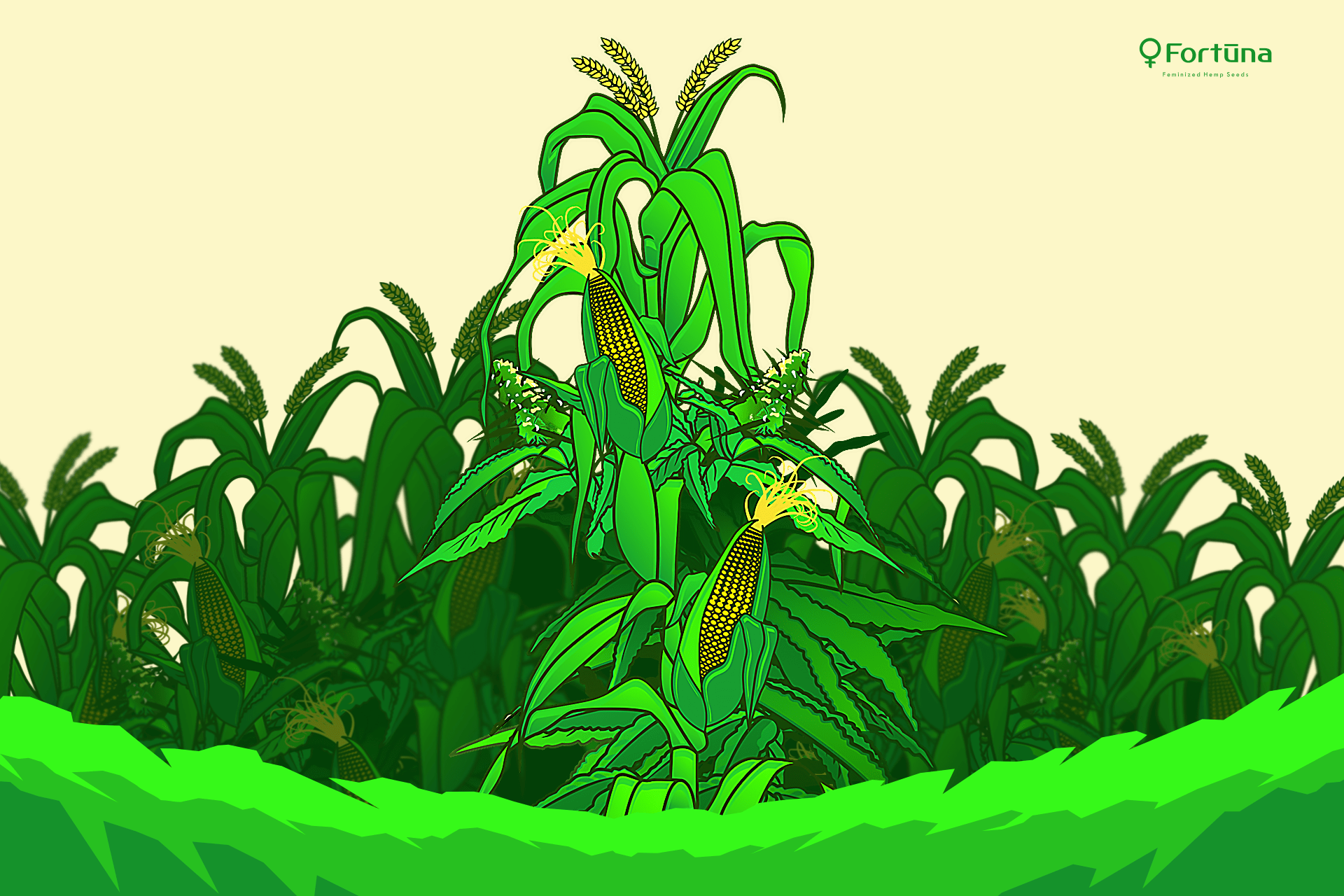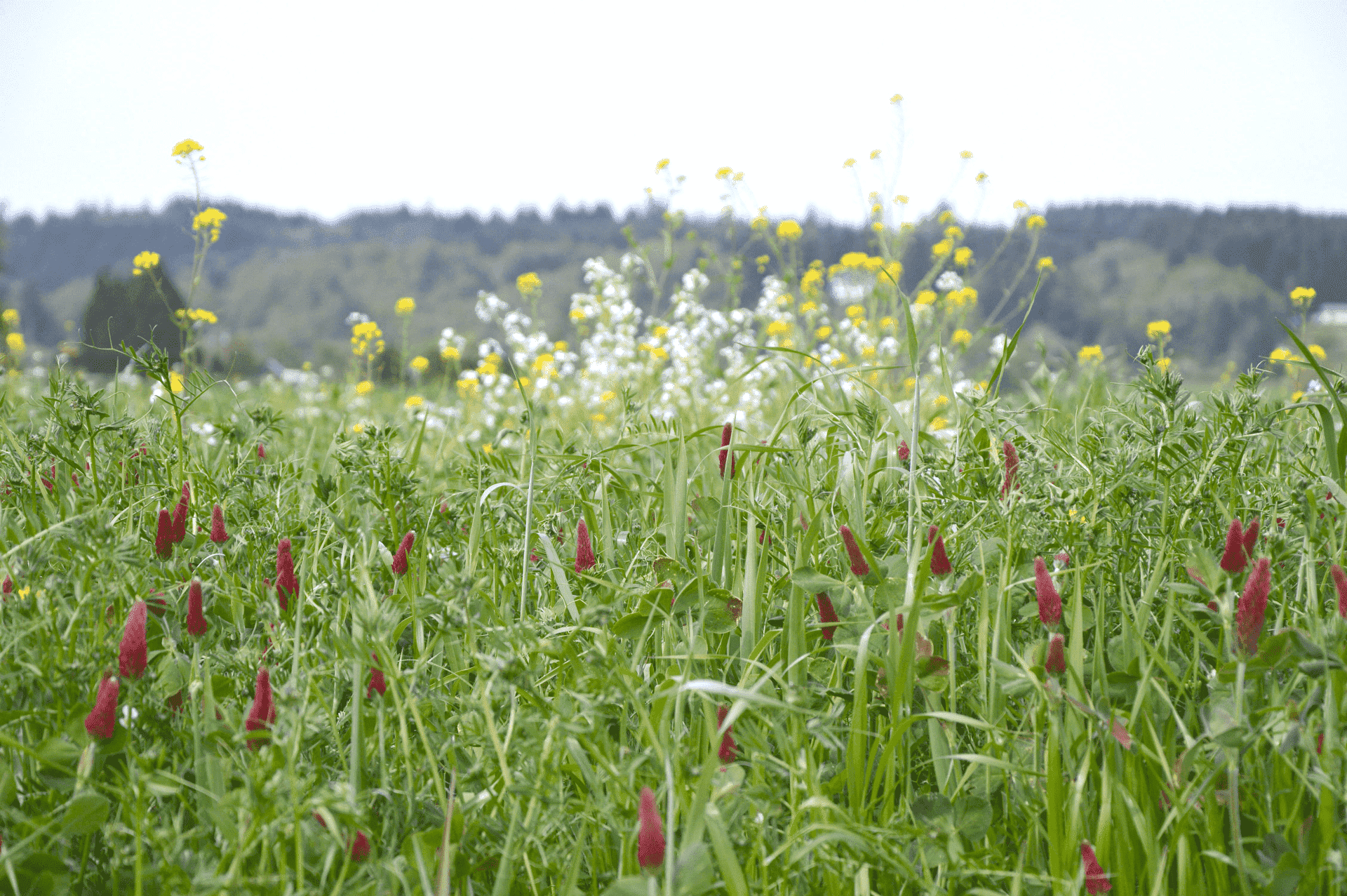
- Hemp Farming
-
by gu
Hemp farm cover crops are a great way to protect and nourish the soil between seasons. Today, we’ll discuss some of the benefits of hemp farm cover crops then help you choose the best cover crop strategy for your hemp farm.
Benefits of Cover Crops for Hemp Farms
Cover crops are special plant species that farmers use to protect and nourish the soil between growing seasons. They serve as placeholders to help keep farmland fresh and safe from the elements during the offseason.
There are a few ways that cover crops can benefit hemp farms. First, they help build organic matter in the soil as the plants decompose and feed the microbial community. Land that is rich in organic matter also has better aeration and water infiltration, which not only supports more abundant plant growth but also improves irrigation efficiency to help save water.
Cover crops also help suppress weeds and control soil erosion and compaction. If there are residual nutrients in the soil following a hemp harvest, cover crops can help consume them, as well.
Moreover, many cover crops (especially legume-type crops like clovers and peas) help replenish nitrogen in the soil by pulling it from the air. Legumes are among the few plants that can do this thanks to a nitrogen-fixing bacteria that these plants contain. Most plants – including hemp – must pull nitrogen from the soil. Hence, legume cover crops reduce the need for supplemental nutrients during hemp’s vegetative growth stage.
However, cover crops are not a set-it-and-forget-it system. They require diligent management and the use of carefully selected cover crop species.

Choosing the Best Cover Crop for a Hemp Farm
Different cover crops serve different purposes. When selecting the best cover crop for a hemp farm, one must first consider the goal of the cover crop. For example, is the objective to reduce erosion and excessive nutrients? Perhaps the goal is to replenish lost nitrogen or to reduce soil-borne pests and diseases. The answer to this will determine which cover crops are best for hemp farming. Note that most farmers combine two or more cover crop types to improve efficiency and expand the benefits of seasonal crop coverage.
Grasses Reduce Erosion and Excessive Nutrients
Grass crops include oats, rye, wheat, barley, and annual ryegrass. Thanks to their extensive root systems and significant biomass, these crops are great at reducing soil erosion and consuming excessive nutrients in the soil. Farmers should plant grass cover crops between mid-September and mid-October at about 50 to 100 pounds of seed per acre.
Legumes Replenish Nitrogen
Legumes with roots colonized by rhizobia bacteria have an incredible ability to pull nitrogen from the soil. Common legume plants include crop peas, Hairy vetch, and clovers. Crimson clover is the most common legume cover crop, but other varieties like berseem, balansa, and Persian clovers work well, as well. Note that only seeds inoculated with the appropriate bacteria can fix atmospheric nitrogen back into the soil.

Brassicas Control Pests and Disease
Brassicas like mustards, turnips, and radishes help break up the soil with their deep, expansive roots. These plants also help ward off unwanted pests and diseases as they decompose back into the ground. Glucosinolate, the spicy component in these plants, serves as a deterrent for pests like nematodes while regulating and reducing diseases. However, come brassicas contain the black leg fungus, which can quickly spread out of control. Some states like Oregon require that all brassicas seeds are certified free of black leg and recommend frequent crop monitoring to see that the pathogenic fungus does not take hold.
Important Cover Crop Considerations
Cover crops are a great addition to any hemp farm. However, there are a few things to consider before planting a cover crop. First and foremost is to plant seedlings at an appropriate depth and density to be effective. Though all seeds must come into direct contact with the soil to sprout, their depth will differ. Small seeds should rest at a depth of about one-quarter to one-half inch deep, whereas larger seeds like peas and cereal grains need an inch or two ground cover to germinate. When broadcasting seed throughout the farmland, use rollers to ensure they reach the proper depth at which to grow.
Also, farmers must terminate cover crops before they set seed to keep them from turning into invasive weeds during the growing season. Though mowing cover crops is sufficient in some cases, most often, farmers will till them into the ground, which encourages aeration and adds additional organic matter to the soil. Terminate cover crops about three to four weeks before the Spring growing season begins.
Hemp Farm Cover Crops : Final Thoughts
Hemp farming is an exciting endeavor that involves many tried-and-true tricks of the trade. Cover crops are one such component of a hemp farm that can greatly reduce labor and improve hemp plant health.
Contact our experts to learn more hemp farming tips and to get started on your CBD hemp farming journey.

